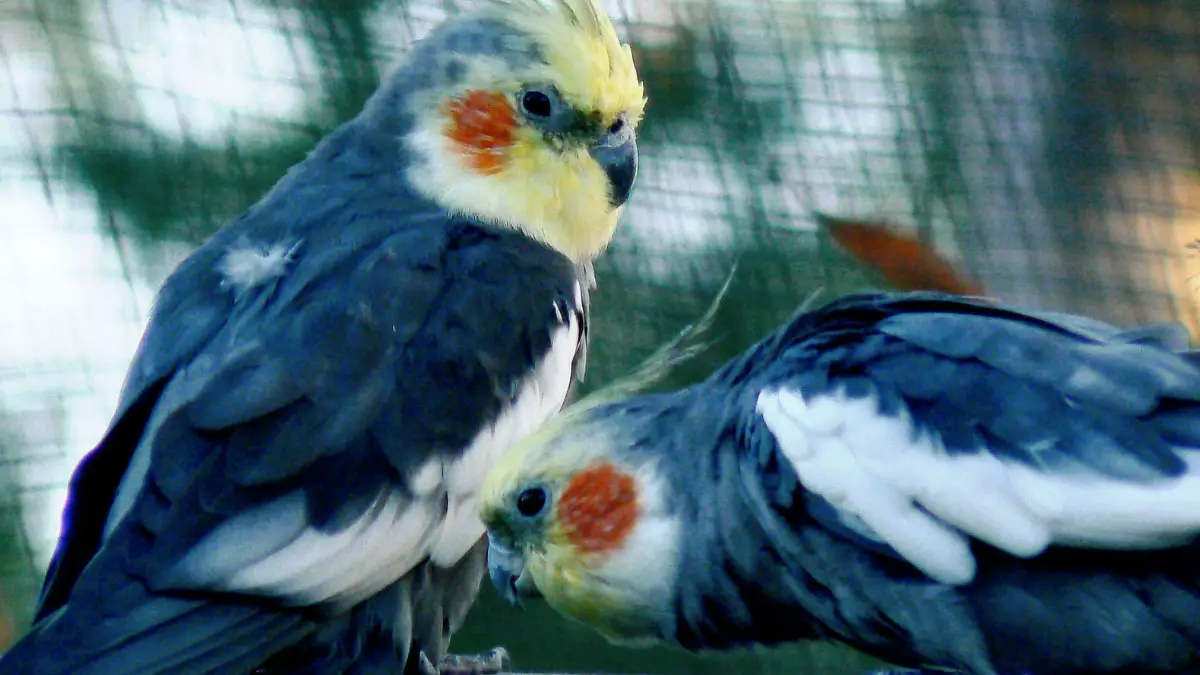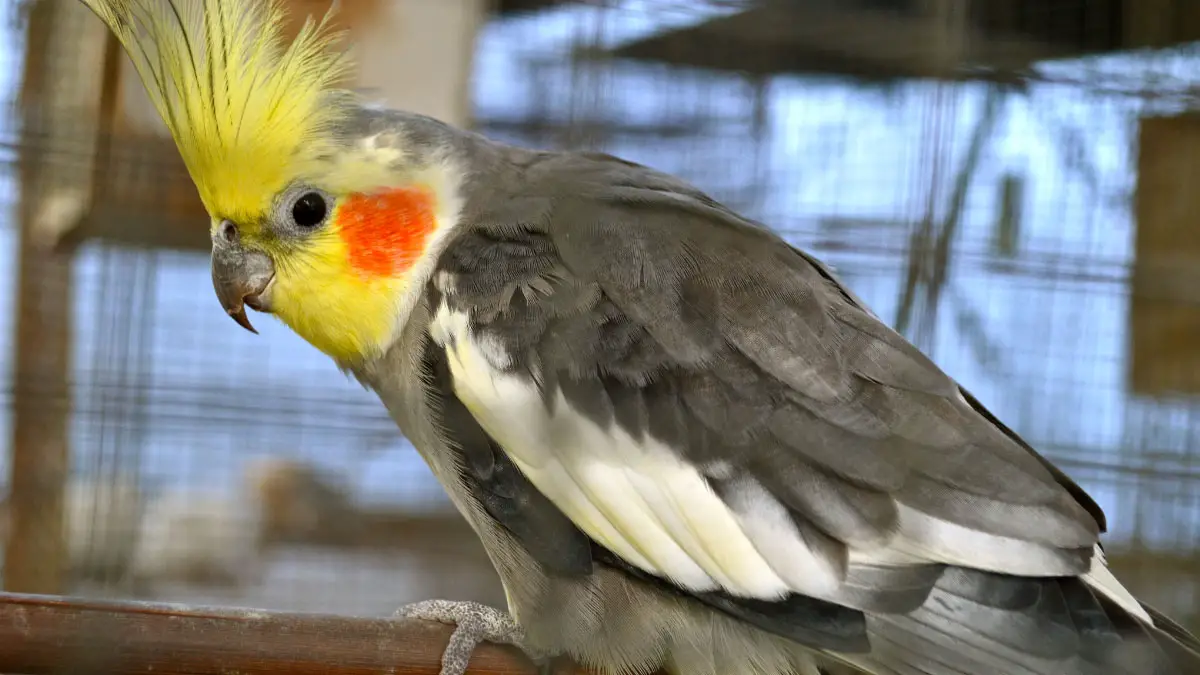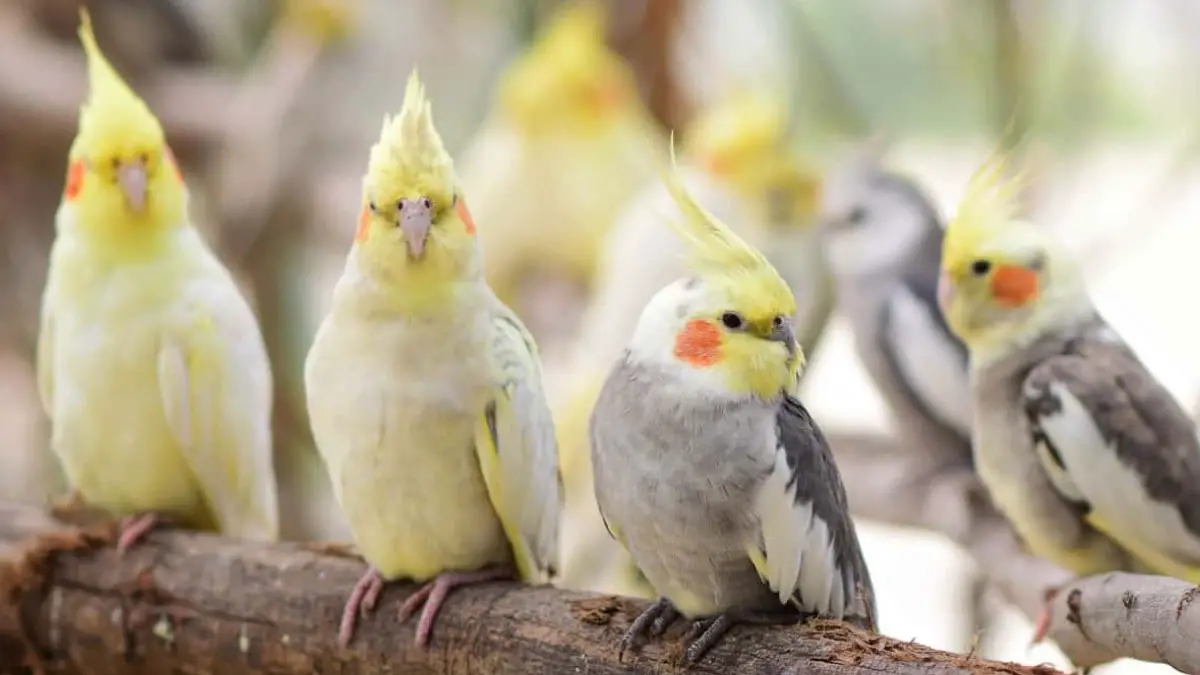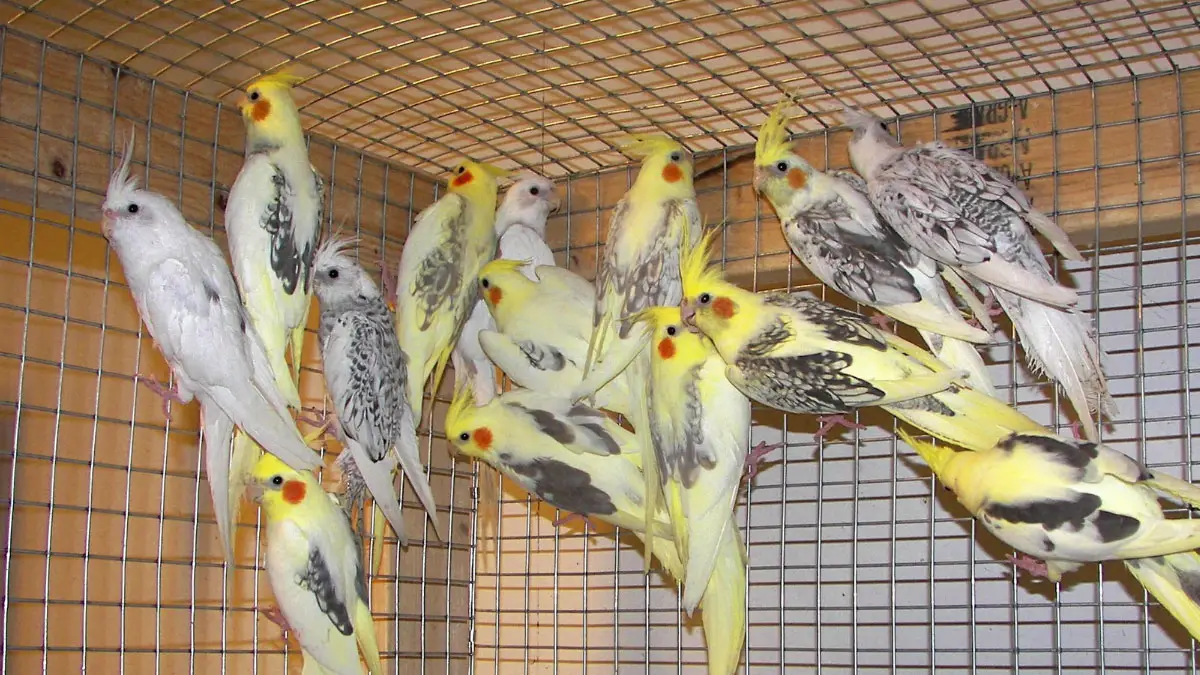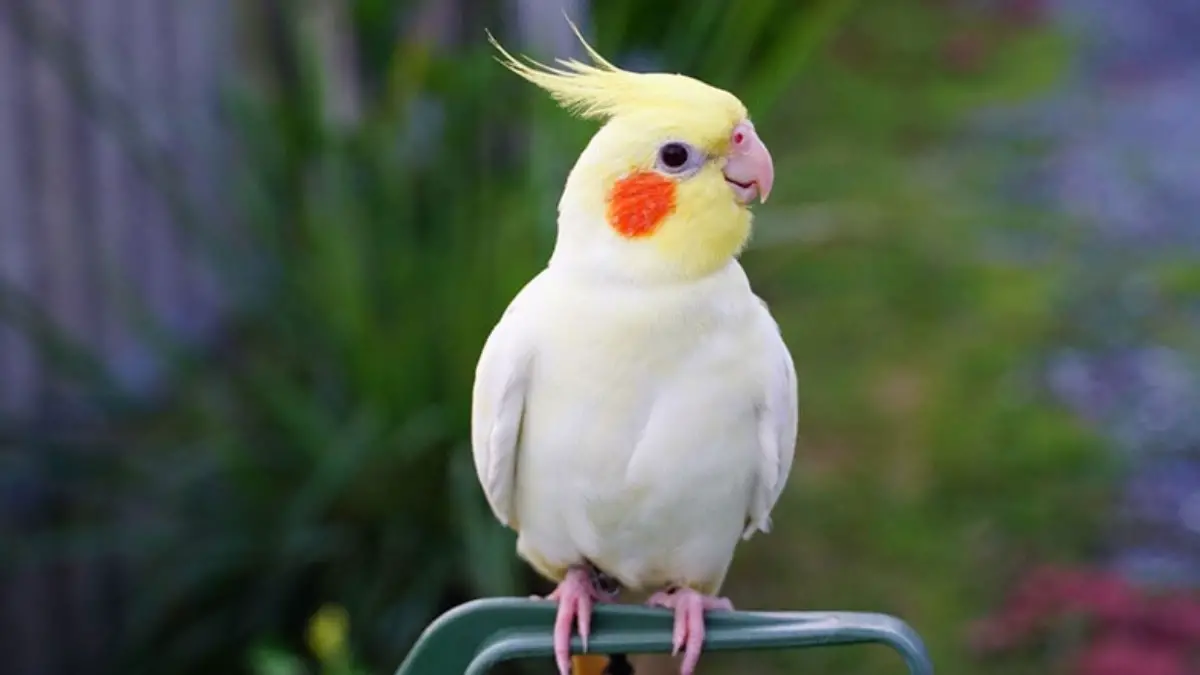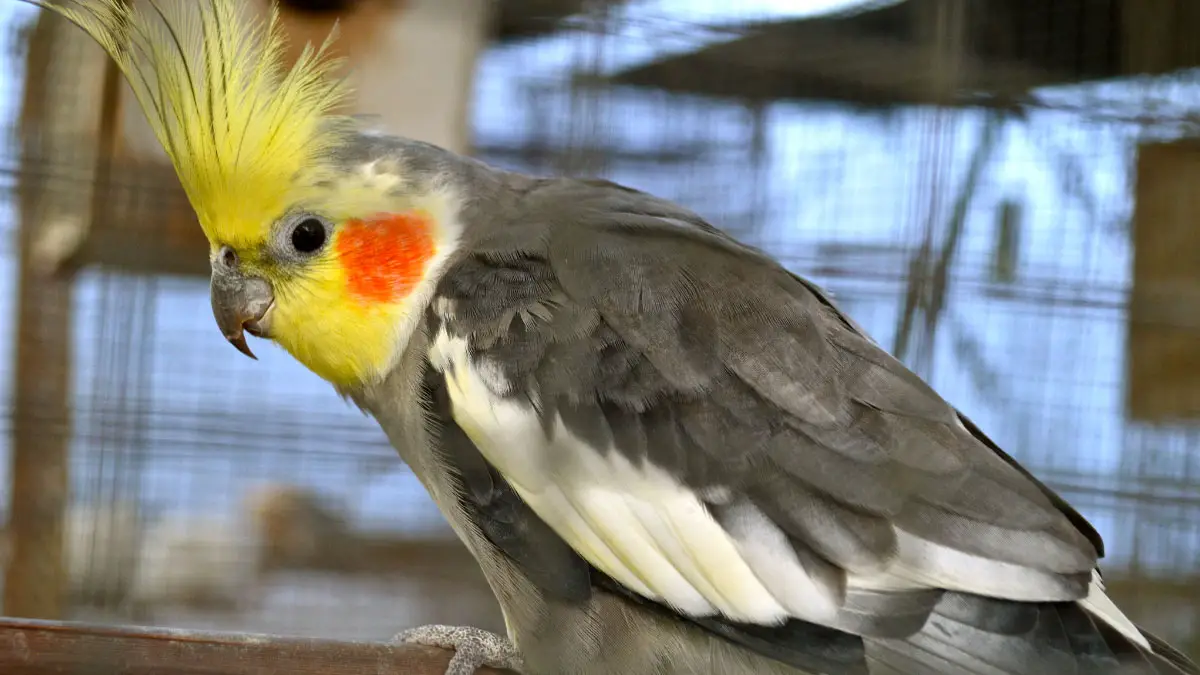Most animals are easy to tell their gender by observing specific parts of their body. However, for cockatiels, it’s difficult, even for experienced owners, to tell them apart. Fortunately, cockatiels are not completely monomorphic and have various ways to differentiate their genders.
So, how do you tell if a cockatiel is male or female? In most breeds, males have yellow faces with brighter orange cheek marks than females. Essentially, females have yellow markings under their wing feathers and tail feathers, while males lack such spots in their respective body parts. Also, males are more active and louder than females.
While it’s hard to perceive gender across different ages, breeds, and mutations, there are various credible ways to tell. Read on to learn the various methods you can employ to tell cockatiel genders and their differences.
Male Vs Female Cockatiel: Differences between male and female cockatiel
Cockatiels are some of the incredible pets that bird lovers enjoy caring for. They’re active and playful, and their ability to learn and mimic only makes them more adorable. However, with time, first-time owners will often wonder what their pet’s genders are, especially when naming them.
While young, cockatiels lack sexual dimorphism, which is the difference between genders. This remains the case until they molt, which happens between 6 – 9 months. After molting, a new and colorful coat of plumage grows, with more variations that are used to tell genders. However, before a year, some males may show courtship behaviors and whistle a lot.
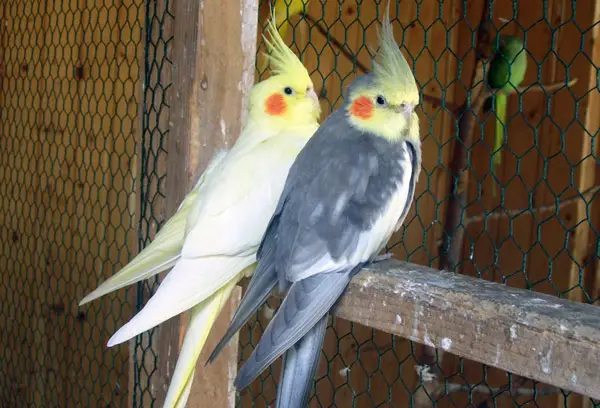
Here are some physical and behavioral ways to tell cockatiels’ genders after their first molt.
1. Face and Cheeks
A normal gray male cockatiel has a bright yellow face on a gray body. They also have the same bright yellow color on the crest and have bright orange round cheek marks. Females’ faces have duller yellow and orange colors than their male counterparts. In many breeds, females don’t grow yellow faces after their first molt and retain their juvenile gray or brown.
2. Under Feather Markings
Mature female cockatiels have markings on the underside of their wing feathers. These markings resemble those they had when they were juveniles, but the markings multiply in all feathers. Male juvenile cockatiels also have markings though they disappear after they molt, remaining with a black wing.
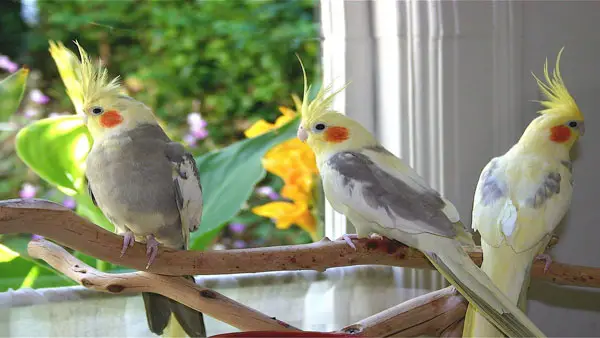
3. Tail Feather Markings
Female cockatiels have markings on the underside of their tail feathers. These markings can be bearings or dots of either gray, white, or yellow, depending on the breed. In contrast, males have little to no feather markings.
4. Body Plumage
Using plumage to tell age can sometimes be unreliable, though it is also a possible way to confirm. Normal male gray cockatiels grow a darker gray plumage after their first molt. Whereas females’ body plumage is a lighter gray after molting.
5. General Behaviors
From a young age, males are more vocal and whistle a lot more than females. They are easier to teach and are more curious when observing their images in the mirror. Females are quieter and sometimes hiss and screech more than males when agitated. Females don’t investigate mirrors for long before they lose interest.
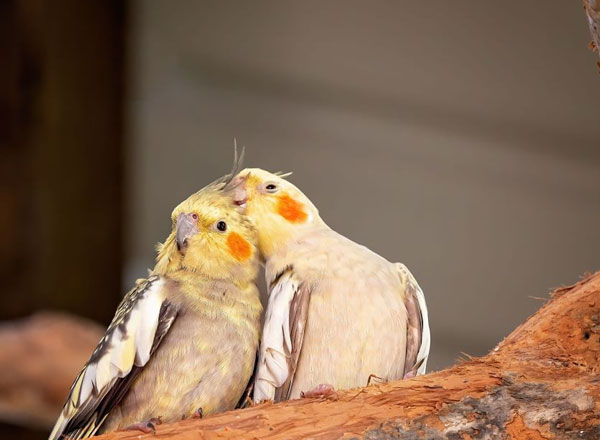
6. Mating Behaviors
Males always try to attract a partner by loudly tapping their beaks and strutting while whistling. They also hop and do head dips, all to attract female attention even during the off-season months. Females will attempt to feed males they have bonded with to show affection.
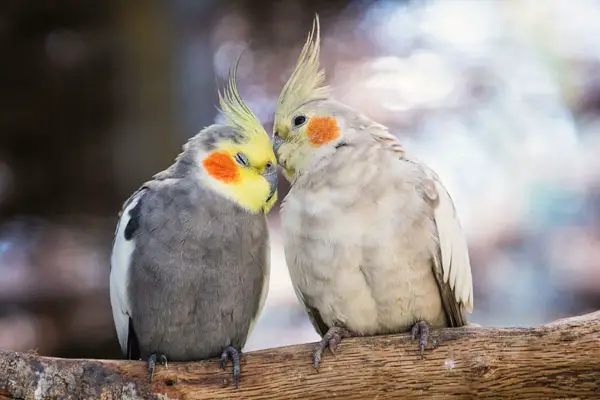
If you have to rely on the above methods, it means you must be a very careful observer. You may find it even more challenging, especially if you’ve kept two cockatiels of the same gender. You will try looking out for some behavior, which may not come by, depending on how the two relate. But you need not worry because we’ve addressed more tips, which you will find useful as you read on.
What Are the Differences Between Male and Female Cockatiels?
Despite being hard to tell the cockatiels’ genders as juveniles, it gets easier as they grow. After the first molt, they develop distinctive differences that are used to differentiate the genders. The following table contains the differences between a male and a female cockatiel.
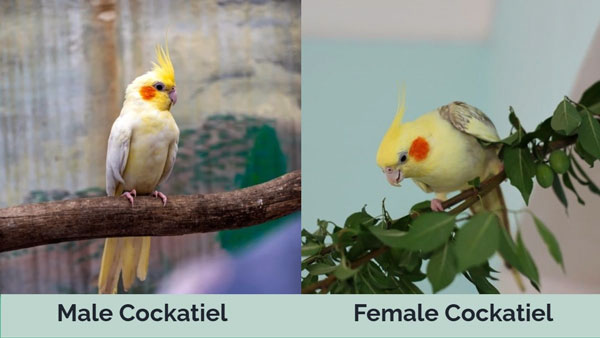
| Male | Female |
| Male cockatiels have more striking facial features. | Female cockatiels mostly retain most of the juvenile characteristics. |
| Males also develop a vibrant yellow color on their faces after molting. | Most females’ colors are dull or have no yellow on their faces. |
| The cheek patch on a male cockatiel is brighter orange. | Female cockatiels have a more faded orange cheek patch. |
| Male cockatiels have few or no markings under the wings. | Female cockatiels can have either yellow, white, or gray underwing markings. |
| After molting, male cockatiels have loose tail markings. | After molting, female cockatiels develop bearings or dots under the tail. |
| Male cockatiels are more vocal and active even before six months. | Female cockatiels are Docile and calm. |
| Male gray cockatiel breeds have darker gray plumage. | Normal female gray cockatiels have lighter gray plumage. |
In the wild, you can easily tell the female from the male because the female will brood sometime after laying eggs. Usually, a female cockatiel starts laying eggs after about one to two weeks of mating. But, again, you can’t rely on this information because you may be keeping two cockatiels of the same gender.
How Do I Tell If a Lutino Cockatiel Is Male or Female?
Lutino cockatiels are mutations of the common gray cockatiel but with deprived integumentary melanins. They have whitish-yellow bodies and yellow heads with high crests. Like the normal gray cockatiels, an adult male lutino has brighter yellow on the face, while the females have a duller shade.
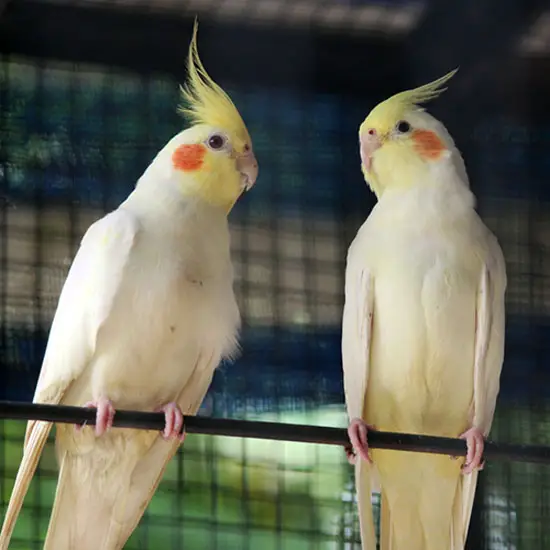
Female lutino cockatiels have yellow bearings under the wings, while males don’t. They also have yellow markings on the underwings, which they retain after their first molt. To distinctly see the wing markings, place a light source behind the bird and extend its wings.
How Do I Tell If an Albino Cockatiel Is Male or Female?
Albino cockatiels are a combination of a lutino cockatiel and whiteface gene. They lack the yellow color in most mutations and remain all-white in color except for their red eyes. The lack of markings makes gender identification hard and must be done by a professional.
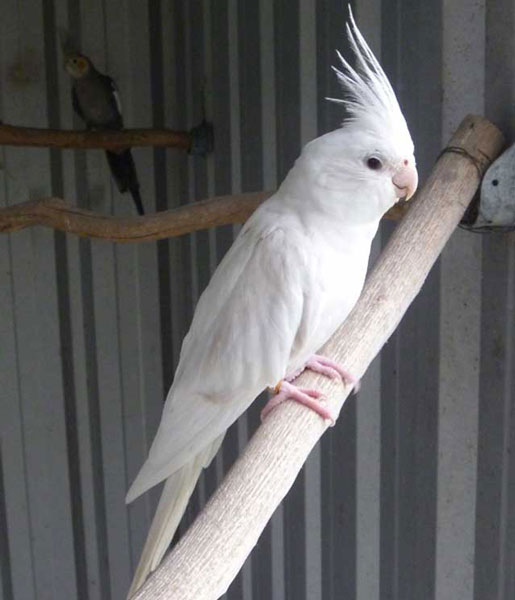
One way to tell the albino cockatiel gender is by checking their pelvic bone placement. The bones are wide apart in mature females who have laid eggs and closer in the males. The pelvic check should be performed by an experienced avian veterinarian and only on mature cockatiels.
How Do I Tell If My Young Cockatiel Is Male or Female?
Most gender identification methods are only possible on mature birds. This is because after they molt, many changes happen in their feathers, giving them distinctive characteristics used to determine gender. Other methods, like the pelvic check, are only possible for birds who have laid eggs before.
However, not all is lost because a DNA test can be used to determine the bird’s gender. Bird DNA testing is done in many avian healthcare centers specializing in birds’ health. DNA testing doesn’t include surgeries since the samples are corrected from the bird’s feathers or nails.
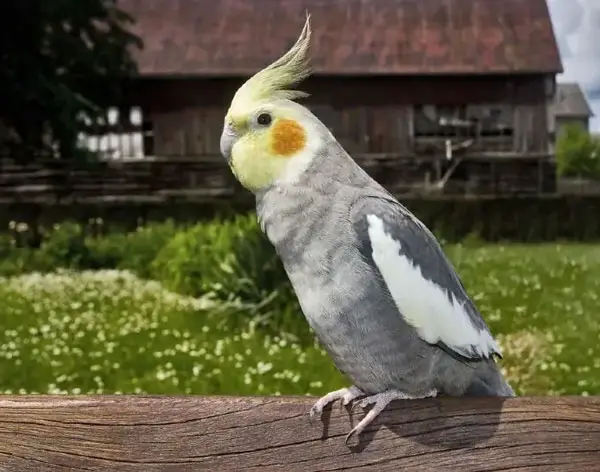
DNA testing includes using Polymerase Chain Reaction, best known as PCR, which amplifies segments for easier and more distinctive studying. The birds’ gender is determined by studying their chromosome pair, which is ZW for females and ZZ for males.
However, you don’t have to worry about learning all the science as all you do is send the samples. After several days, the results are sent to you, containing the bird’s gender. DNA testing is 100 percent accurate and can be used even in mature birds that are difficult to observe.
FAQ
While learning the bird’s gender can be complicated, most of the provided observations work and provide solutions. However, not all people can successfully tell the bird’s gender which leaves them with many questions. The following are some of the frequently asked questions regarding this topic.
Cockatiels’ age can be determined from their young age using DNA testing. However, for other methods, the birds should at least go through their first molting. Most times, molting happens between 6 – 9 months after hatching, though it depends on the breed. Also, some methods are possible after 12 months, when the bird has started laying eggs.
Other than the physical observations, birds’ behaviors and characters are used to determine their gender. Male cockatiels are more vocal and can sing for a long time more than females. Males are also easier to train and do the most mimicry compared to females. Generally, a male cockatiel will look and feel more active than a female, who is calmer and more composed.
You can observe a cockatiel’s head mask and feathers to determine the gender. However, the bird must already be molted, which is when they become distinctive between the genders. A male cockatiel will have a bright yellow face, while some female breeds won’t get any yellow. Females retain markings on their tail and wing feathers, while males lose or remain with a few.
Outro
Male vs female cockatiel: How to tell if it’s a male or female? Like most birds, it’s difficult to tell a cockatiel’s gender, especially when they’re young. Before their first molt, these parrots share most of the characteristics leaving only a few to observe. Luckily after their first molt, they develop new colorful feathers that differentiate them by gender.
Female cockatiels retain some of the marks they had when juveniles, improving them to cover all feathers. On the contrary, males lose most of their markings, but they grow brighter yellow faces and orange cheeks. There are other effective ways to tell a cockatiel’s gender, including observing its personality, DNA testing, and pelvic check.


